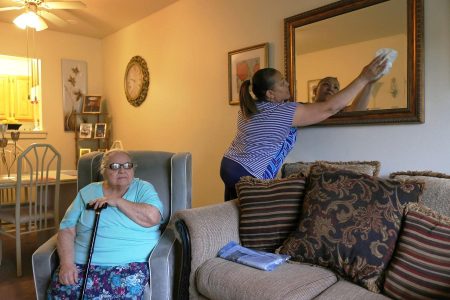A longtime industrial plant manager was eager to retire. He even had numbers written on his truck’s visor that no one, not even his wife, knew what they meant. It was his retirement date. He saved, planned, and dutifully attended all his company’s retirement readiness seminars. He was in the zone; he could finally retire with financial security.
A Friday that was 30 years in the making finally came. His work buddies threw a party. There was cake, cards, and even a celebratory bottle of whiskey. After a pour or two and promises made by all to get together, he packed his box and swiped out of the building for the last time. A year later, he admits, “I see them (co-workers) occasionally, less than I thought. Yeah, lots of new faces, you know. It’s hard to keep up with the conversation and what’s going on when you are not at the plant and know who is doing what.”
We often look at retirement as leaving work, but we don’t often think ahead of what else we might be leaving behind. Our work lives provide more than income or, for some, even a sense of purpose; work is also a significant part of how we maintain our social and emotional well-being.
For most of us, work is where we interact with people we have known, sometimes for years or even decades. Compared to other aspects of our daily lives, our work lives provide a disproportional opportunity to connect with people.
Think about it. The security guard, the cafeteria worker, or even that familiar face you pass by on your way to where you spend your day may not be friends in the classic sense but are a big part of connecting with other people. There are also your colleagues that, while you may not be the most intimate of friends, fill your day socially. And for some, we have real friends at work. People who we have grown older together in both careers and life. Over the years, side by side with you, these people have experienced changes in the workplace and shared (even if only in the showing of family photos) major life events from weddings, birth of a child, graduations, weddings of children, and the birth of grandchildren. Your coworkers are part of your broader social fabric that all originated and were cultivated in the workplace.
Managing Your Social Portfolio
Retirement planning includes lots of math, math about money. Then, there is the math of your social portfolio. Each of us has a social portfolio — a collection of people that include familiar faces, colleagues, friends, and very good friends that make up our social life beyond our family.
Work contributes a large part to your social portfolio. We typically spend at least eight hours a day, five days a week, adding up to at least 40 hours a week of face time with people at work. That’s more waking hours with people at work than with family. You can’t count sleeping hours, time cleaning the house (no one talks when the vacuum is on), or slogging through the grocery store aisle as time with loved ones, or not as quality time at least.
Therefore, while work contributes to your retirement portfolio it is also a critical contributor to your social portfolio. Despite visions of beach walks and pickleball that are hardwired into our idea of retirement, the actual definition of retirement is to withdraw and pull back. Unfortunately, research conducted by Gallup, Pew Research, and others indicates that large numbers of us have withdrawn from the other activities, once standard foundations of our social well-being outside of work. Participation in community groups, including service clubs, and faith-based institutions, for example, have nose-dived over the decades making us unprepared for life in retirement. Put simply, when we withdraw from work, we leave more than a frustrating commute, the proverbial grind, or even an annoying coworker; we are leaving perhaps one the most significant parts of our social self behind.
5 Questions To Audit Your Social Portfolio Before Your Final Day Of Work
Comprehensive retirement planning might be best described as longevity planning. While retirement planning is primarily about money, longevity planning is about money and the life you hope to live in retirement. Moreover, longevity planning emphasizes preparedness, not simply making a plan. It’s about taking action before you retire so that the foundations of life in advanced age are in place.
So, long before your final day at work, conduct a self-audit of your social portfolio with these five questions.
- How many work colleagues will realistically stay connected with you socially after you have been retired for a few months, a year, or a few years?
- How many friends do you have whom you might call just-for-fun friends? These are people you can grab a morning coffee with, meet for lunch, or share an occasional night out.
- Have you considered what your daily routine might be in retirement to replace the many familiar and often friendly faces you take for granted each day?
- Are you engaged in activities outside of work that provide you with the opportunity to meet new people and the time it takes to make new friends? Note that your retirement plans to spend time on that much-beloved hobby in the basement will not likely make you many new friends and will not necessarily make you a better companion with your significant other upstairs.
- What have you done before retirement to develop new friends outside of work? Like a 401(k) retirement plan, your workplace can match your contributions, but it requires you to opt in and make them.
There is a natural attrition to your social portfolio, arguably your most valuable asset in life, especially in retirement. Life in retirement, like all the life stages before it, is dynamic. When it comes to our social connections, people move away, divorce reallocates friendships, old friends drift, and yes, sadly, death forces us to draw down on our social portfolio. So, while you are clicking on your employer’s handy dandy online retirement readiness app to find out, “When can I retire?” don’t forget to review your social portfolio’s retirement readiness and determine if you have saved and invested adequately in the social assets you will need in life after work.
Read the full article here













